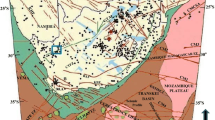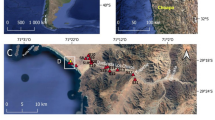Abstract
The Late-Cenomanian–Early-Turronian Mishrif multi-carbonates in the North-Rumaila oil field has undergone into reservoir-scale high-resolution sequence stratigraphic investigation. Five-carbonate sequences (M4, M5, M6, M7, and M8) are established, comprised by (fifth-order high-frequency lithofacies cycles). The chrono-surfaces (CS5, CS6, and CS7) have screened a particular construction of Rudistid-bioaccumulated-bank/shoal buildups across the North Rumaila field. The CS6 marker has clarified two main evolutionary stages of the bank structure. The first case indicates the bank buildup crossed by the CS6 marker, whereas the second case signifies a stage the marker terminating the bank by well-developed lagoonal facies. The recognized single high-frequency lithofacies cycle expresses a well developed shallowing-upward progression of mud-to-grain-dominated bioclastic wackestone/packstone facies as (non/semi-TMF characters) to coated grain (bioclastic)/peloidal grainstone facies as TMF grade. Four-chronostratigraphically based reservoir units are structured: reservoir cycle sets (M8a), (M7a), (M6a) and cycle set (M5b). Two chronostratigraphic cross sections based on CS6-flattening surface represent south-north alignment of the studied wells illustrates the bank buildup pre-to-post CS6 time, defining a new approach of the vertical stacking/lateral continuity pattern of the depositional cycles. This new approach clarifies a new Mishrif reservoir architecture in the field, highly foremost, and controls the reservoir dynamics. Accordingly, four sectional Rudist bank/shoal/lagoonal buildups are introduced, covered 25 NR wells (12 representative + 13 involved). For safe production from Mishrif carbonates, a proposed sequence stratigraphic philosophy with water injection consideration is submitted.






Similar content being viewed by others
References
Al-Naqib KM (1967) Geology of Arabian Peninsula, southwestern Iraq. US Geol Survey Prof Paper, 560-G, p 54
Chevron (2006) 3-D geologic updated study of Mishrif formation in West-Qurna Oil field / South Iraq
Total & Chevron (2008) Geology & reservoir study of Majnoon and Bin Umr Fields
elf-Aquitaine (1995) Majnoon reservoir study: Mishrif and Yamama Formations, Vol 2, PP1–41
Galloway W (1989) Genetic stratigraphic sequences in basin analysis, architecture and genesis of flooding surface bounded depositional units. AAPG Bulletin V73:125–142
Owen RM, Nasr SN (1958) Stratigraphy of the Kuwait-Basra Area, Habitat of Oil. AAPG p. 1252-1278 Figures 1-6 Tulsa
Razoian AM (2002) A study to improve enhanced oil recovery of Mishrif Reservoir In North Rumaila and West-Qurna and Main Pay/South Rumaila Fields, MSc Thesis, University of Basra
van Bellen RC, Dunnington HV, Wetzel R, Norton DM (1959) Lexique Stratigraphique International, Asie, vol 3, Fasc.10a, Iraq. Paris, pp 333
Author information
Authors and Affiliations
Corresponding author
Rights and permissions
About this article
Cite this article
Awadeesian, A.M.R., Al-Jawed, S.N.A. & Saleh, A.H. Reservoir-scale sequence stratigraphy of Mishrif carbonates and implication to water injection strategy North Rumaila field case. Arab J Geosci 8, 7025–7040 (2015). https://doi.org/10.1007/s12517-014-1650-1
Received:
Accepted:
Published:
Issue Date:
DOI: https://doi.org/10.1007/s12517-014-1650-1




